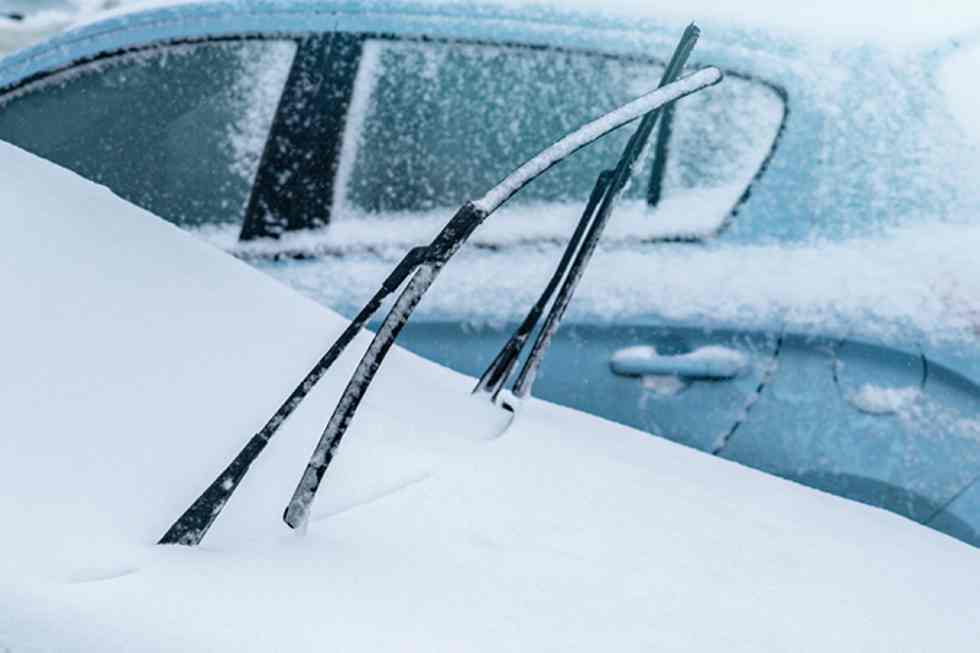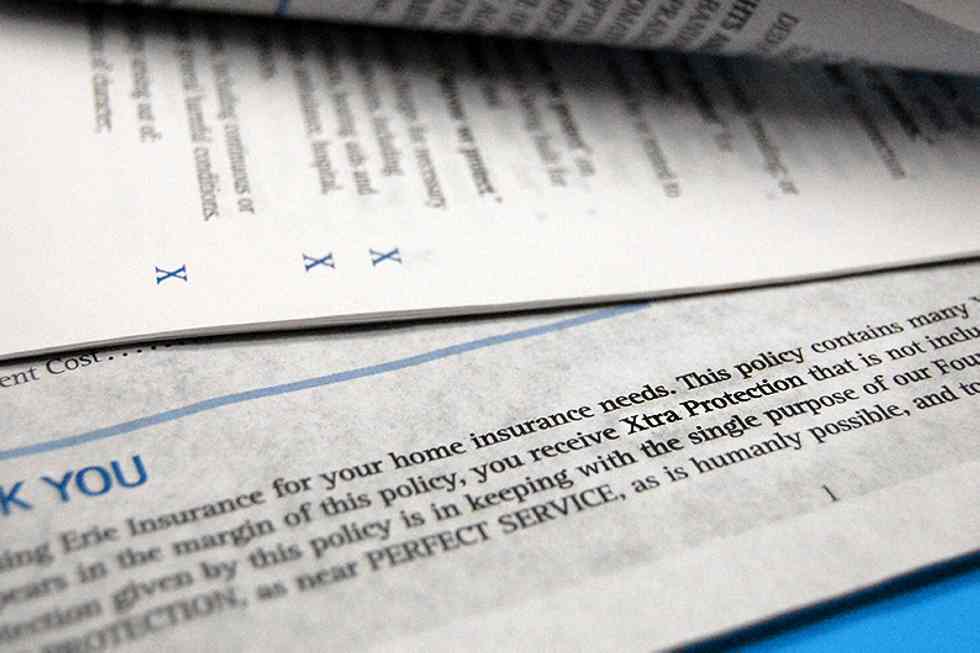In case you reside in an space that’s accustomed to winter climate, it’s a well-recognized sight: Automobiles parked with their windshield wipers pointed up, saluting the sky.
Some individuals say lifting your wipers may help forestall injury to the rubber wiper blades whereas others are skeptical, and it’s lengthy been a subject of debate. Like selecting which path to hold the bathroom paper roll (over or beneath), both sides has its staunch supporters. However which wiper methodology is finest for clearing ice and snow out of your car?
To assist reply that query, we requested Harold Singh, materials injury claims high quality management supervisor at Erie Insurance coverage, to assist decide who’s on the correct aspect of the nice winter windshield wiper debate: the Lifters or the Leavers?
Elevate Your Wipers Up
The Lifters, drivers who raise their windshield wipers up earlier than a snowstorm, might accomplish that for a number of causes. Having your wipers up and out of the best way makes it simpler to scrape ice and snow from the windshield.
Plus, it additionally prevents the delicate rubber wiper blades from getting frozen to the glass. If this has occurred to you, it may be a ache to chip away ice out of your frozen wipers. And making an attempt to tug them free could make issues worse.
ERIE’s professional says: “In case your wipers are frozen to the windshield, you’ll be able to injury the blades by attempting to raise them free,” Singh mentioned. “And for those who activate the wipers whereas they’re frozen, you too can put a number of stress on the wiper linkage and motor – which might result in costly repairs.”
Go away Your Wipers Down
The Leavers, these within the “wipers down” camp, declare the cons of lifting your wipers outweigh any benefits. Not solely does it require an additional step every time you get out and in of your car, in case your wipers do get frozen to the windshield, your window defroster could make fast work of melting the ice.
Some Leavers say that frequently lifting your wipers can put on out their springs. However Singh doesn’t assume that argument holds up.
ERIE’s professional says: “There are 20-year-old vehicles that don’t have worn out springs,” he mentioned. “They’re constructed to face up to that sort of stress, so that you’ll get a few years of life out of the particular wiper arm.”
Which Technique is Greatest?
Elevate or depart? Up or down? Which methodology wipes the opposite out? Like a frosted windshield, it’s not totally clear.
“There are dangers both means,” mentioned Singh. “However the danger is larger that you just’ll tear the rubber attempting to free a frozen wiper blade. So leaving them up might be your finest wager, if you are able to do it.”
In accordance with his expertise, Singh says there’s not a number of car injury reported from leaving wiper blades up or down throughout a snowstorm. Nevertheless, he has seen auto claims associated to the improper clearing of snow and ice.
“We’ve seen claims the place somebody tried to make use of a shovel to get snow off their automotive, or scratched their windshield through the use of a steel scraper,” he mentioned. “Even a snow brush can put mild scratches in your paint for those who’re not cautious.”
Fast Tricks to Clear Snow and Ice From Your Windshield
Listed below are some ideas to assist clear ice and snow out of your car – to attenuate any injury:
- Use the correct instruments. In case you wouldn’t apply it to your windshield or paint in the summertime, don’t use it within the winter. This implies avoiding steel scrapers, shovels and coarse brushes or brooms.
- Greater is healthier. Even for those who don’t have a giant truck or SUV, Singh recommends getting the most important plastic scraper you’ll find. It provides you with extra leverage, and also you received’t really feel such as you want a shovel for heavy snow.
- Use either side of the scraper. Have you ever ever observed the ridges on the again aspect of a plastic snow scraper? These are designed to assist break up thick sheets of ice into smaller items. So when scraping ice, use the again aspect first, then flip it over to the flat blade. This methodology will make fast work of clearing an icy windshield.
- Use your defroster. Earlier than you start scraping, begin your car and switch the defroster on excessive. The job will get simpler as your automotive warms up.
Does My Auto Insurance coverage Cowl Windshield Chips or Cracks?
In case you do occur to wreck your car’s windshield, ERIE stands prepared to assist. Usually talking, right here’s how your auto coverage can kick in:
- Windshield restore: In most states the place ERIE does enterprise*, complete protection from ERIE can cowl the associated fee to restore a cracked or chipped windshield with out a deductible.
- Windshield substitute: In most states the place ERIE does enterprise*, our Glass Restore Protection can cowl a substitute windshield (much less your deductible). And as a little bit bonus, for those who want a substitute windshield, we’ll throw in a pair of latest wiper blades at no further value.
- Zero Greenback Glass Deductible choice: You’ll be able to add our Zero Greenback Glass Deductible choice to your ERIE auto coverage. With it, you pay no deductible for a windshield substitute. As a result of protection varies by state, it is best to overview your protection particulars with a licensed insurance coverage agent.
Associated Studying: Automobile Insurance coverage, Glass and Windshields
Wish to study extra? Try these associated hyperlinks from ERIE.
- The way to Deal with a Windshield Restore
- What to Anticipate When You File a Windshield or Auto Glass Declare
- Telltale Indicators of a “Windshield Bully” (And Why to Watch Out for Them)
*In New York, it’s essential to buy Full Window Glass protection with a purpose to have the restore characteristic with out a deductible. Full Window Glass protection isn’t accessible in North Carolina. In Kentucky, glass is taken into account security tools; beneath complete protection, no deductible applies for restore or substitute if solely security tools is broken (even when the loss is brought on by collision).












Leave a Reply